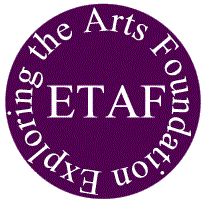|
| ||||||||||||||||||||||||||||
|
|
||||||||||||||||||||||||||||
more about symbols, symbolism, and Symbolistsunderstanding symbols and why they are importantA symbol is a word, phrase, image, object, action, event, pattern, or the like that represents something else by association, resemblance, or convention. Not only does a symbol stand for something else, it possesses a complex set of meanings that tie it to the thing it represents. This close association with the thing it represents gives it an inherent value in its own right, a value that is derived from what it represents. In fact, so closely is a symbol associated with the thing it represents, the symbol is taken to be synonymous with or equivalent to that thing. Examples of symbols: statues, monuments, sculptures, ideas, concepts, certain sensations or emotions or feelings, signs or words written on a piece of paper or blackboard which represent other things, flags, and emblems. signs versus symbolsIt is illuminating to compare signs with symbols. A sign is a word, phrase, image, object, action, event, pattern, or the like that represents something else by association. In this, a sign is similar to a symbol. Examples of signs: A price tag, billboard, road signs that warn of a curve ahead, mathematical signs, musical signs, a storm cloud. the major factor that distinguishes a sign from a symbol is the nature of the association with the thing that it represents:
untangling symbolsA symbol is not a vague abstraction, yet our idea of what a symbol is is so misused and over-applied, it sometimes gets tangled up in its various meanings. Symbols can exist in the physical world of material objects as well as in the abstract world of the mind. Another way to say this is that symbols can be tangible (real or visible) or intangible (invisible).
All of these different kinds of things can become symbols when they stand for something besides themselves. Tangible symbols may represent tangible things or intangible things; intangible symbols may represent tangible things or intangible things. In fact, symbols and the things they represent may be classified according to whether they are tangible or intangible, as follows:
Kinds of symbols and the kinds of things they represent
the source of symbolic powerVery powerful symbols are powerful because they are rich in meaning; they have many aspects and forms; their relationships with the things they represent are complex. Complex relationships tighten their connection with the things they represent. Other, less powerful symbols have simpler relationships with the things they represent. Generally, the more complex the relationship between a symbol and the thing it represents, the stronger the bond between them. An example of a symbol with complex and strong relationships is the Hindu god Brahma-Vishnu-Shiva (the Trimurti). An example of a symbol with simpler relationships is the image of a Smiley {Ref.}. the Trimurti (the Creator, the Preserver, and the Destroyer) is indelibly and strongly associated with creation, preservation, and destruction because it is a complex manifestation of religion. The Smiley is indelibly but less strongly associated with happiness because of the ubiquity of the smile. What is the nature of these kinds of indelible relationships? What makes them strong and potentially powerful? At one and the same time:
For example:
This example describes some of the effects that a national flag can produce, effects that many of us have personally experienced. It demonstrates that the mere sight or idea of a national flag can evince the same kinds of feelings and thoughts as can direct contact with the nation it represents, even when there is no actual contact with the nation; it shows how a symbol can be a call to action just as surely and forcefully as can a nation. It illustrates how symbols can have a value and power of their own that is separate from and independent of the power possessed by what they represent. What is the source of this independent power? How can it exist even though the symbol is not the thing that is represented? the source of a symbol's independent symbolic power is the power inherent in the thing it represents. A symbol can derive and absorb this power because of its strong association with the thing it represents; and it continues to manifest this power even when the thing is absent. The more power there is in the thing that is represented and the closer the association with the thing, the more powerful and independent is the symbol. the fact that symbols have strong, independent relationships with powerful things is the secret of their immense power over people.
symbol systemsA system of any kind is an assemblage or combination of things or parts forming a complex or unitary whole, a set of correlated members, an ordered and comprehensive assemblage of facts, principles, doctrines, or the like in a particular field of knowledge. A symbol system is like any other systemit's an assemblage of symbols forming a unitary whole. Groups or sets of interrelated symbols are found in religion, philosophy, language, and many other fields of human endeavor. symbolism and symbolistsSymbolism is the practice of representing things by means of symbols or of attributing symbolic meanings or significance to objects, events, or relationships. A symbolism is a system of symbols or representations, a symbolic meaning or representation, or a revelation or suggestion of intangible conditions or truths by means of artistic invention. Symbolism is also the term reserved for and applied to the movement, theory, or practice of the late 19th century Symbolists, a group of chiefly French writers and artists who expressed their ideas and emotions indirectly through symbols. In general, a symbolist is one who uses symbols or symbolism, or one who interprets or represents conditions or truths by the use of symbols or symbolism. the Importance of symbolsMan is a symbolic creature. He thinks in symbols. Where would mathematicians, linguists, or musicians be without symbols? To psychologists like Jung and Freud, symbols are fundamental to the makeup and functioning of the psyche. Every culture and era has had symbolists and has devised multiple symbol systems. There are perhaps hundreds of thousands or even millions of symbols that are in common circulation, even as you read this, and many more that have circulated in cultures throughout history. Some have been in active use for millennia while others have been created only to serve their purpose briefly and vanish. Today, new symbols are being created and old symbols are dying at an amazing rate. the arts are replete with symbols. Manipulating symbols is a large part of what artists do, so much so that in large measure artists are symbolists. Indeed, with a few minor exceptions, one might assert that no art form could even be conducted without symbols. Arguably, symbolism is at the very core of the arts. | ||||||||||||||||||||||||||||
|
| ||||||||||||||||||||||||||||
Search this web site with Electricka's Search Tool:
tap or click here
Electricka's Theme Products
Shop At Cafe Press
This web site and
its contents are copyrighted by
Decision Consulting Incorporated (DCI).
All rights reserved. | ||||||||||||||||||||||||||||



